Have you ever observed the stripes adorning an airline pilot’s uniform and wondered about their significance? Those bars, prominently displayed on the sleeves of their jackets and the epaulets of their shirts, are not merely decorative. They are a visual language, instantly communicating a pilot’s experience, qualifications, and rank within the flight deck hierarchy. This article will delve into the meaning behind Airline Pilot Uniform Stripes, tracing their historical roots and explaining how to distinguish a trainee pilot from a seasoned captain.
The Early Days of Aviation Uniforms: Functionality Over Formality
In the pioneering era of aviation, before the advent of pressurized cabins and sophisticated flight decks, piloting was a rugged and exposed profession. The attire of early aviators prioritized practicality and protection from the elements above all else.
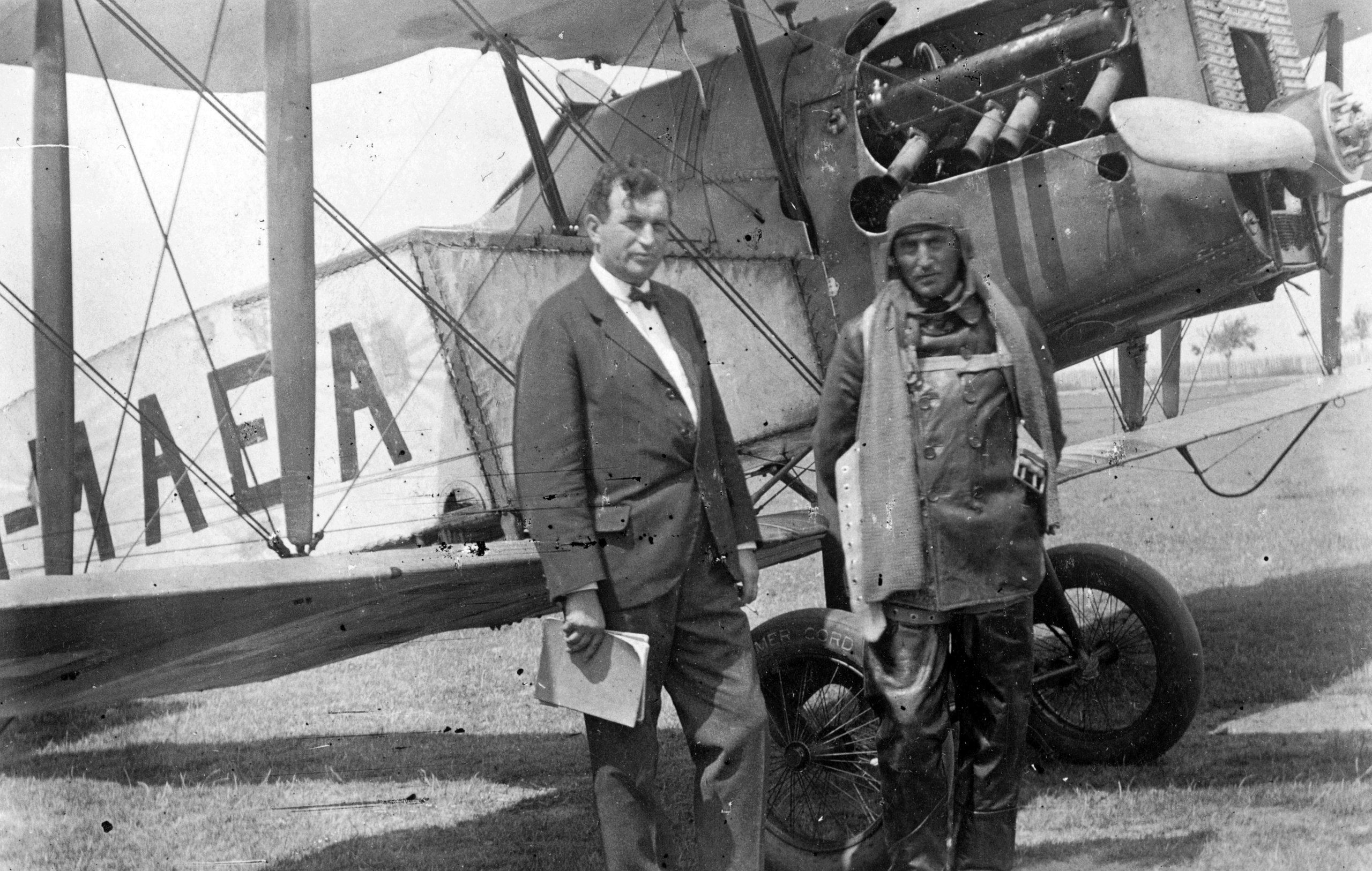 Two men in early aviation attire stand before a Bristol F2B Fighter biplane. The man on the left wears full aviator gear including a leather helmet and goggles, while the man on the right is dressed in a suit.
Two men in early aviation attire stand before a Bristol F2B Fighter biplane. The man on the left wears full aviator gear including a leather helmet and goggles, while the man on the right is dressed in a suit.
Photo: Fortepan | Wikimedia Commons
Pilots in open-cockpit aircraft faced harsh conditions, necessitating warm and durable clothing. Iconic aviator fashion emerged from this necessity, featuring sheepskin leather jackets for insulation, robust bomber jackets, sturdy boots, thick gloves, protective scarves, and essential helmets and goggles to combat the wind and cold. There were no standardized uniforms or rank insignia during this period.
Pan Am Pioneers Naval-Inspired Uniforms
A significant shift in pilot attire occurred in the late 1930s with the rise of Pan American World Airways (Pan Am) and their groundbreaking Clipper Flying Boat Service. Pan Am, aiming to project an image of sophistication and reliability for its transatlantic routes, drew inspiration from naval traditions. They introduced naval-style uniforms for their flight crews, a deliberate choice to mirror the prestige and professionalism associated with transatlantic ocean liners like the SS Normandie and RMS Queen Mary, their contemporary competitors in passenger transport.
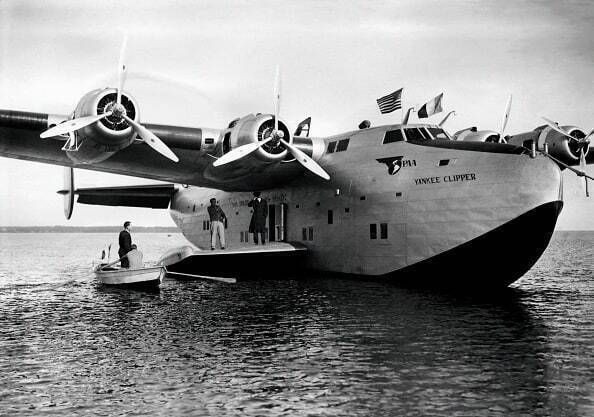 A vintage photograph of the Pan Am Yankee Clipper flying boat in flight.
A vintage photograph of the Pan Am Yankee Clipper flying boat in flight.
The scale of flight operations at the time also played a role in uniform adoption. Early flying boats and larger aircraft required significantly larger crews than today’s jets, sometimes exceeding twenty personnel. Uniforms became essential for clearly delineating ranks and responsibilities within these larger teams.
 Interior view of a Pan Am Clipper flying boat showing multiple crew members in uniform working at their stations.
Interior view of a Pan Am Clipper flying boat showing multiple crew members in uniform working at their stations.
Photo: Public domain | picryl
Pan Am’s initial pilot uniforms featured elegant navy blue double-breasted jackets, adorned with rank stripes on the sleeve cuffs and matching hats. This naval-inspired aesthetic proved highly influential. Other airlines, aspiring to emulate Pan Am’s success and project a similar image of competence and authority, quickly adopted comparable uniform styles.
Enduring Tradition: Pilot Uniforms Since the 1930s
Remarkably, the fundamental design of airline pilot uniforms has remained largely consistent since the template set by Pan Am in the 1930s. While individual airlines today incorporate unique branding elements into their uniforms to distinguish themselves, the core structure and the use of stripes to denote rank have become industry standards. The only major recent deviation was the temporary adoption of face masks during the COVID-19 pandemic, a global health necessity.
The concept of using stripes or bars on uniforms to signify rank and status has a long history, dating back to 17th-century military uniforms. Airlines adopted this established visual language to clearly communicate the experience and authority of their pilots. The number of stripes directly correlates with a pilot’s rank and level of responsibility. In essence, the uniform serves as a powerful symbol of authority, instantly conveying a pilot’s expertise and, crucially, indicating who is ultimately in command during flight operations, especially in emergency situations.
Airline policies typically grant pilots limited scope for personalizing their uniforms. Strict grooming standards are also commonly enforced, reinforcing a professional and disciplined image.
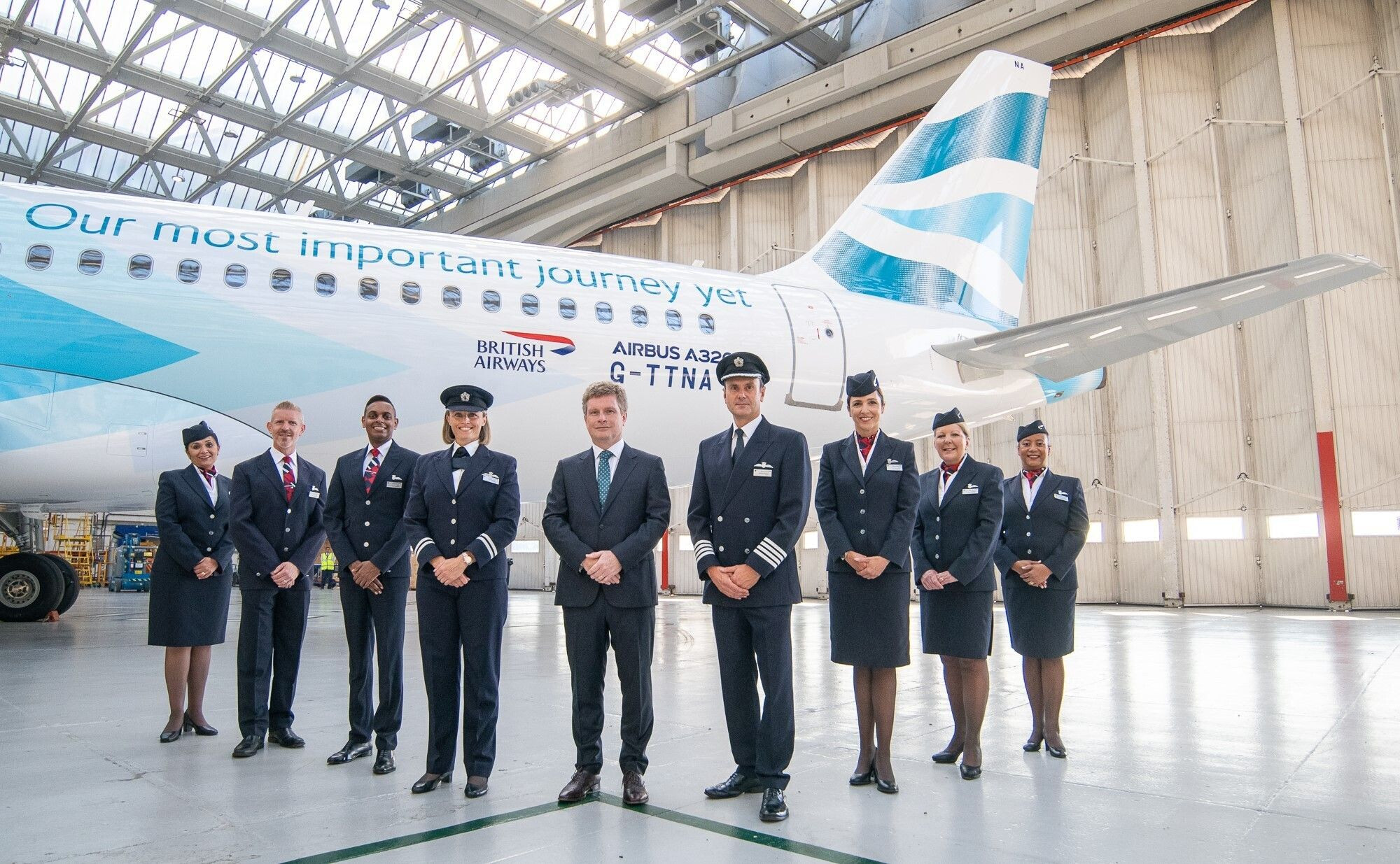 A group of British Airways pilots and cabin crew standing in front of an aircraft, all wearing their distinctive uniforms.
A group of British Airways pilots and cabin crew standing in front of an aircraft, all wearing their distinctive uniforms.
The stripes indicating rank are consistently placed on jacket cuffs and shirt epaulets. Pilot caps are also a standard uniform component, typically displaying the airline’s logo but not the pilot’s specific rank. The evolution of pilot headwear itself is an interesting facet of aviation history.
Let’s break down the stripe system and explore the ranks they represent:
One Stripe: Cadet or Trainee Pilot
A single stripe designates a Cadet Pilot or Trainee Pilot. These individuals are undergoing flight training and are not yet qualified to operate commercial flights independently. It is highly unlikely you would encounter a trainee pilot in the cockpit of a passenger aircraft during normal operations.
Two Stripes: Second Officer or Flight Engineer
Two stripes signify a Second Officer or Flight Engineer. In contemporary aviation, the role of Flight Engineer is largely phased out in modern aircraft. Second Officers are less common on today’s flights, primarily found on ultra-long-haul routes operated by aircraft like the Airbus A380 or Boeing 747, where they may serve as relief pilots on extended missions.
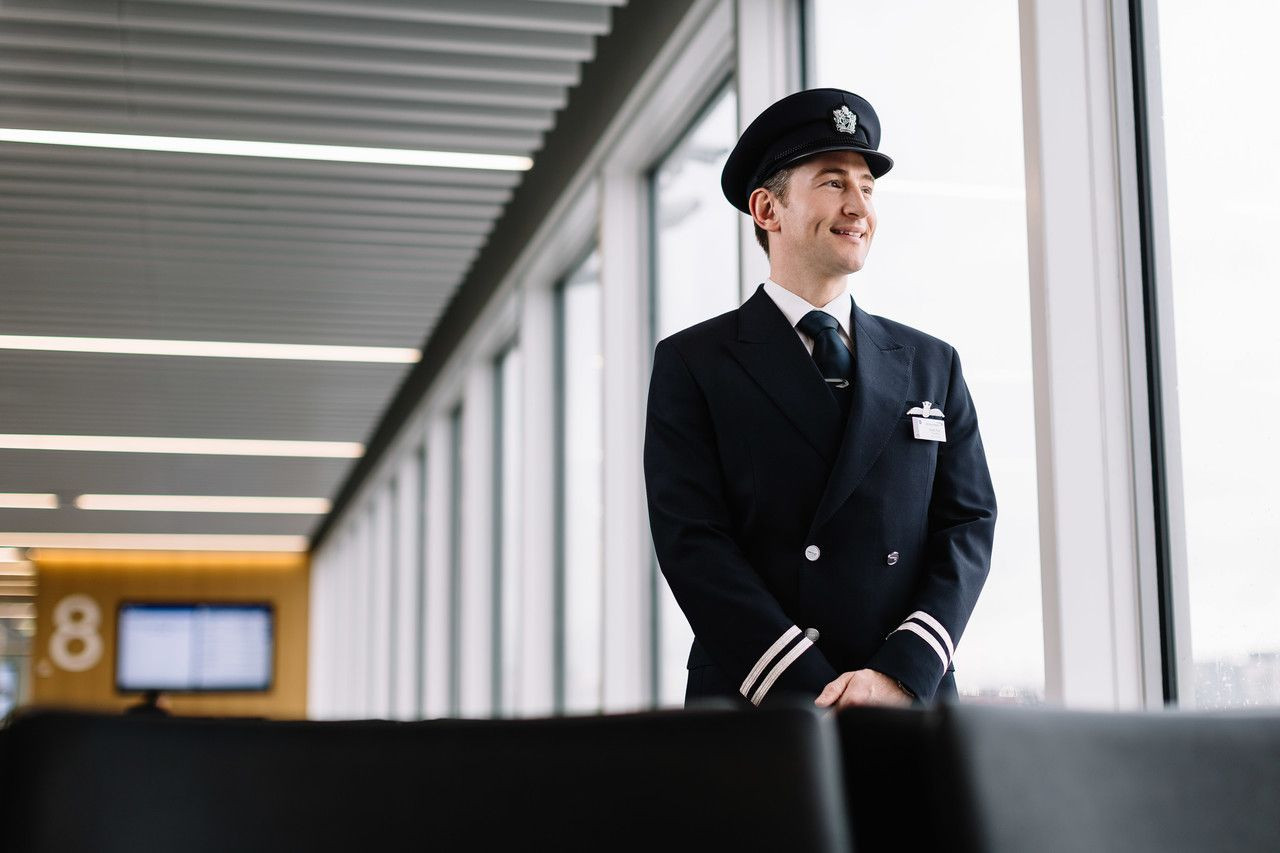 A British Airways First Officer standing confidently near a terminal window, showcasing the three stripes on their uniform.
A British Airways First Officer standing confidently near a terminal window, showcasing the three stripes on their uniform.
Photo: British Airways
Three Stripes: First Officer
Three stripes are the hallmark of a First Officer, also known as the co-pilot. The First Officer is second-in-command to the Captain. Most airlines immediately award three stripes upon a pilot’s promotion to First Officer. First Officers are essential members of the flight crew and are always present in the cockpit of commercial flights.
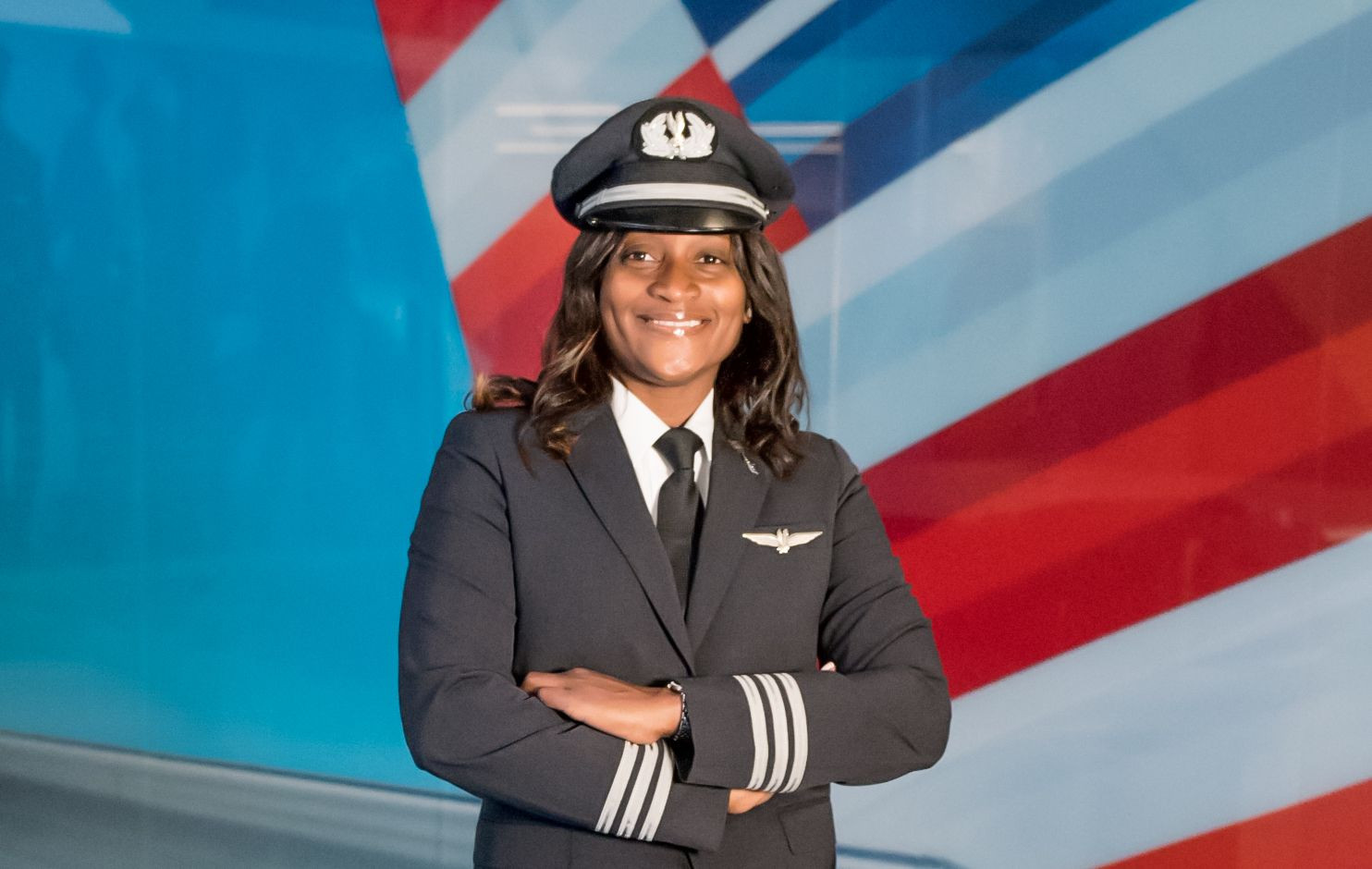 A female American Airlines First Officer in uniform standing in front of an aircraft tail, symbolizing her role in flight operations.
A female American Airlines First Officer in uniform standing in front of an aircraft tail, symbolizing her role in flight operations.
Photo: American Airlines
Some airlines may initially assign two stripes to new First Officers, upgrading them to three stripes upon reaching the rank of Senior First Officer, reflecting increased experience and flight hours.
Three Stripes (Senior First Officer): A Matter of Airline Policy
The rank of Senior First Officer, also indicated by three stripes, denotes a First Officer with substantial experience, typically exceeding 1,500 flight hours. Some airlines impose additional criteria, such as being “command ready,” meaning the pilot is prepared for Captain promotion but awaiting an available position. Despite their advanced experience and readiness for command, Senior First Officers retain the three-stripe insignia.
Four Stripes: Captain
Four stripes unequivocally identify the Captain, the highest-ranking pilot and the ultimate authority on the flight deck. The Captain is responsible for the safety and well-being of all passengers and crew onboard the aircraft.
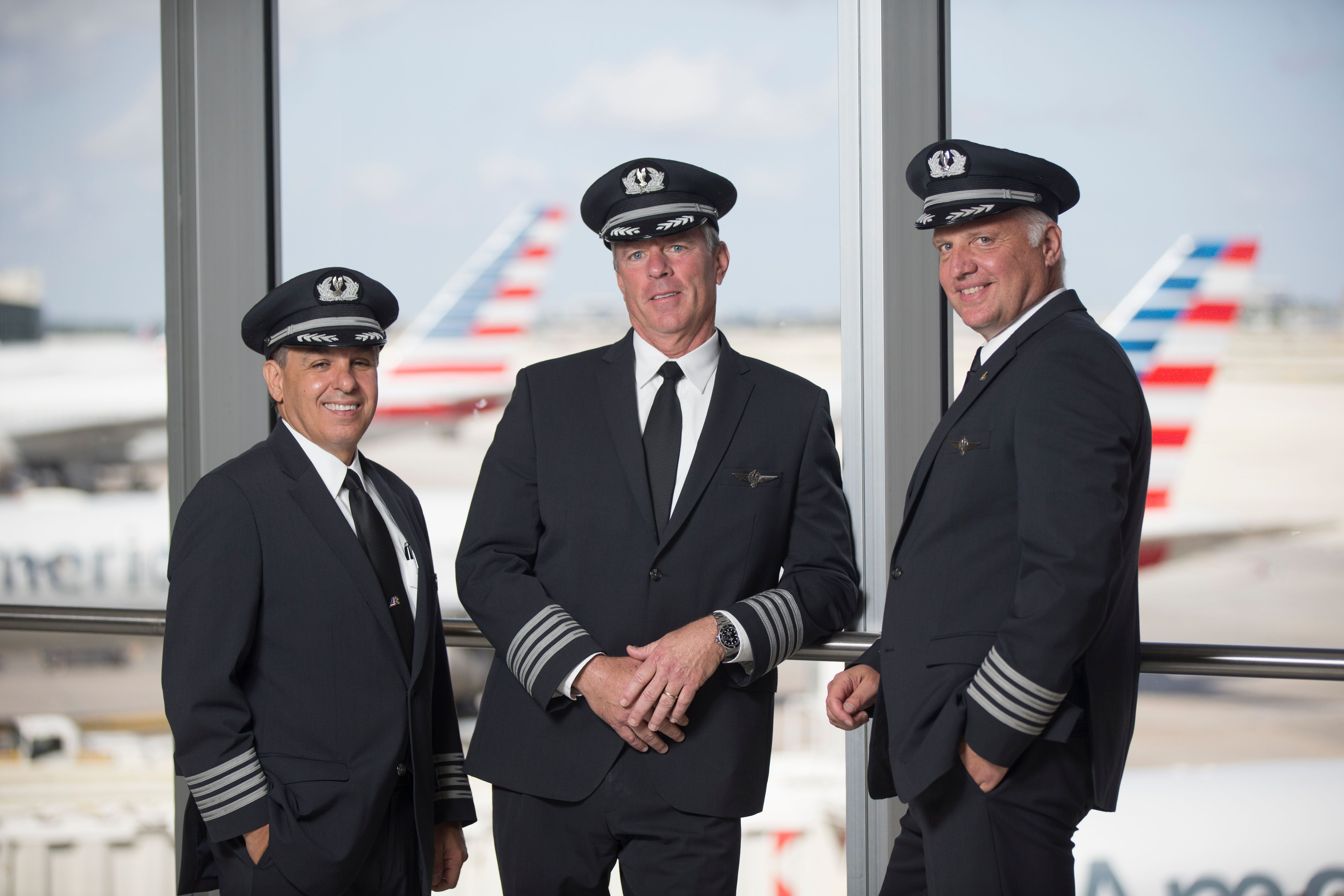 Three American Airlines Captains standing together near a terminal window, their four stripes clearly visible, representing their command authority.
Three American Airlines Captains standing together near a terminal window, their four stripes clearly visible, representing their command authority.
Photo: American Airlines
Four Stripes (Training Captain): Beyond Command, Mentorship
Training Captains also wear four stripes, sharing the insignia of a Captain. However, their role extends beyond routine command responsibilities. Training Captains are specifically qualified to instruct and mentor other pilots. They play a critical role in pilot training and professional development within an airline. A Captain or First Officer transitioning to a new aircraft type will fly under the tutelage of a Training Captain until they demonstrate proficiency and are authorized to operate the aircraft independently.
 A British Airways Training Captain delivering a speech, highlighting the leadership and instructional aspects of the role.
A British Airways Training Captain delivering a speech, highlighting the leadership and instructional aspects of the role.
Photo: British Airways
As reported by The Standard, Training Captains are integral to pilot recruitment and ongoing professional development throughout an airline’s network. While often considered a more senior and better-compensated position, Training Captains, like line Captains, are identified by four stripes. Certain airlines may have further internal ranks for very senior management pilots, but these distinctions are rarely reflected in uniform stripes.
In conclusion, airline pilot uniform stripes are a globally recognized system for indicating rank and experience within the flight crew. From the single stripe of a trainee to the four stripes of a Captain or Training Captain, these bars are a silent yet powerful form of communication, steeped in history and tradition, instantly recognizable to anyone who looks to the flight deck.
